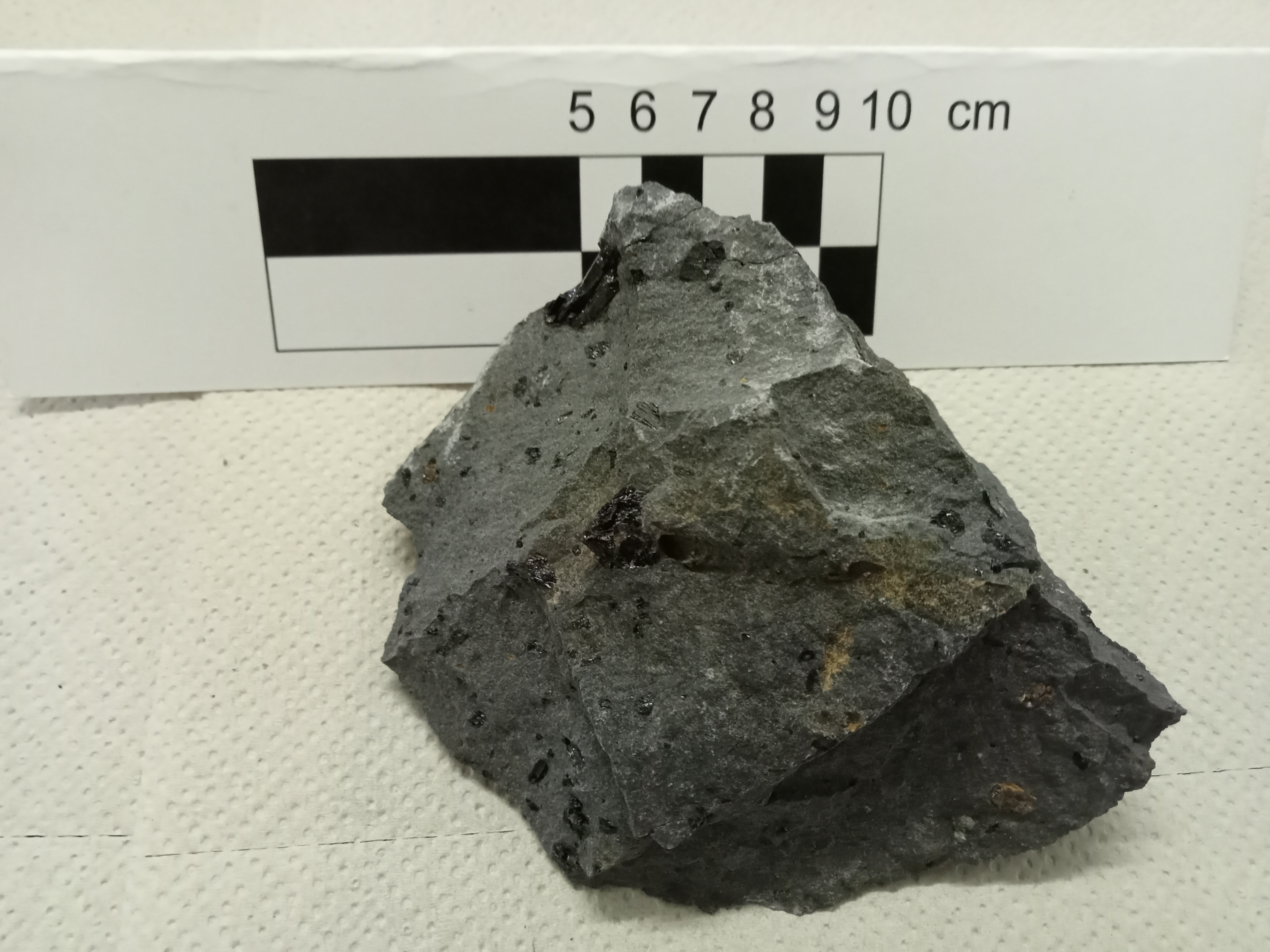Museo Nazionale dell'Antartide
Type of resources
Available actions
Topics
Keywords
Contact for the resource
Provided by
Years
Formats
Representation types
Update frequencies
status
Scale
-
Distribution records of sea cucumbers (Echinodermata, Holothuroidea) based on the collection stored at the Italian National Antarctic Museum (MNA, section of Genoa) is an occurrence type dataset published by Italian National Antarctic Museum (MNA). The dataset comprises a total of 328 distributional records, each one corresponding to a voucher specimen stored at the Italian National Antarctic Museum (MNA) – Genoa section. These records originate from the sampling activities performed in the context of eleven different research projects that took place during 11 scientific polar expeditions conducted in the Ross Sea and the Antarctic Peninsula. In total, 89 different sampling events were conducted using a variety of sampling instruments and methodologies.
-
This dataset gathers distributional data on planktonic copepods (Crustacea, Copepoda) collected in the framework of the III, V and X Expeditions of the Italian National Antarctic Program (PNRA) held in the western Ross Sea from 1987 to 1995. Sampling was conducted with BIONESS and WP2 net in 94 different sampling stations, mainly distributed in the Terra Nova Bay area, at the depth of 0-1000 meters. In terms of spatial coverage, this dataset covers 6027 distributional records that are also reported in terms of original abundance data (ind/m3) to allow a possible modelization of species distributions thanks to the availability of environmental variables that were collected together with the biological samples. The total of distributional records here reported has two different origins: 5306 are represented by bibliographic records obtained by digitizing the original data reports, whereas 721 correspond to physical museum vouchers, now curated by the Italian National Antarctic Museum (MNA, Section of Genoa). This group of museum samples comprises 8225 individual specimens, that were identified to the lowest possible taxonomic level. They belong to 4 orders, 25 families, 52 genera and 82 species, out of which 17 could be only determined at the genus level
-

Isopoda Latreille, 1816 is an order that consists of a vast number of taxa, living and thriving in land, sea, fresh- and groundwater. Isopods in the Southern Ocean are highly speciose and well-represented from the shelf to deep-sea zones. Biogeographical data regarding Ross Sea isopods are presented here, examining the National Antarctic Museum (MNA) Genoa section samples belonging to 15 Antarctic Expeditions. A total of 279 MNA samples were identified, resulting in 53 accepted species distributed in 24 families and 48 genera. From this identification, 15 species are considered new records for the Ross Sea area. GBIF and OBIS (Ocean Biodiversity Information System) (https://obis.org) databases, and bibliographic research were used as validation to the eventually new records for the Ross Sea area. This dataset describes the abundance and distribution of Isopoda of the 15 antarctic campaigns: PNRA Expedition Xth (1994/95), XIth (1995/96), XIIIth (1997/98), XIVth (1998/99), XVIIth (2001/02), XIXth (2003/04), XXVth (2009/10), XXVIIth (2011/12), XXVIIIth (2012/13), XXIXth (2013/14), XXXIIth (2016/17), XXXIVth (2018/19), and NSF (National Science Foundation) "Icefish04", and BAS (British Antarctic Survey) Expedition JR15005 "SO-AntEco" and JR18003 "ICEBERGS2". at Southern Ocean between 23 January 1995 and 05 December 2018.
-
We describe the diversity of marine copepods of Terra Nova Bay (TNB) sampled by 25 μm filters installed in the desalination unit (DU) of the Italian research station "Mario Zucchelli". The opening of the intake pipe of the DU is positioned at a depth of 4 meters and allowed a total of 2,116 specimens to be sampled and recognized. In addition, new occurrence records of copepod genera and species are reported in the same zone. We provide an overview of the marine copepods diversity reported for TNB. The total 2,116 individuals correspond to 14 genera and 15 species and are represented by 167 occurrence records in this dataset. Around 52% of the total number of species are new records for the TNB area are reported in this dataset.
-
We present a data set on Antarctic biodiversity for the phylum Rotifera, providing taxonomic information, geographic distribution, location, and habitat. The data set gathers all the published literature about rotifers found and identified across the Continental, Maritime, and Subantarctic biogeographic regions of Antarctica. A total of 1422 records of rotifers in Antarctica found from 1907 to 2018 is reported, with information on taxonomic hierarchies, updated nomenclature, geographic information, geographic coordinates, and type of habitat. All taxa belonging to Rotifera were considered. In particular, we gathered data from records at the species, genus, family, class (Bdelloidea, Monogononta, Seisonacea), and phylum (Rotifera) level (Fontaneto & De Smet 2015)
-
This dataset includes all the iron meteorites (achondrites) collected during the Italian Antarctic Expeditions since 1991 in Victoria Land and now preserved at the repository of the Museo Nazionale dell’Antartide.
-
This dataset includes all the carbonaceous chondrites CV group collected during the Italian Antarctic Expeditions since 1997 in Victoria Land and now preserved at the repository of the Museo Nazionale dell’Antartide.
-
This dataset includes all the ordinary chondrites L group collected during the Italian Antarctic Expeditions since 1991 in Victoria Land and now preserved at the repository of the Museo Nazionale dell’Antartide.
-
This dataset includes all the ordinary chondrites H group collected during the Italian Antarctic Expeditions since 1991 in Victoria Land and now preserved at the repository of the Museo Nazionale dell’Antartide.
-

During the XXXVIII Italian Antarctic expedition (2022/23), 126 rocks have been sampled within the aim of “MAGIC” project in northern Victoria Land. They include volcanic, igneous and metamorphic rocks, and sediment. The investigated regions are within Cape Hallett SS58-60/2, Freyberg Mountains SS 58-60/1, Mount Murchison SS 58-60/5 and Mount Melbourne SS 58-60/9 USGS sheets. Project: Magma-Ice interaction: late Miocene ice thickness and eruption tempo in northern Victoria Land.